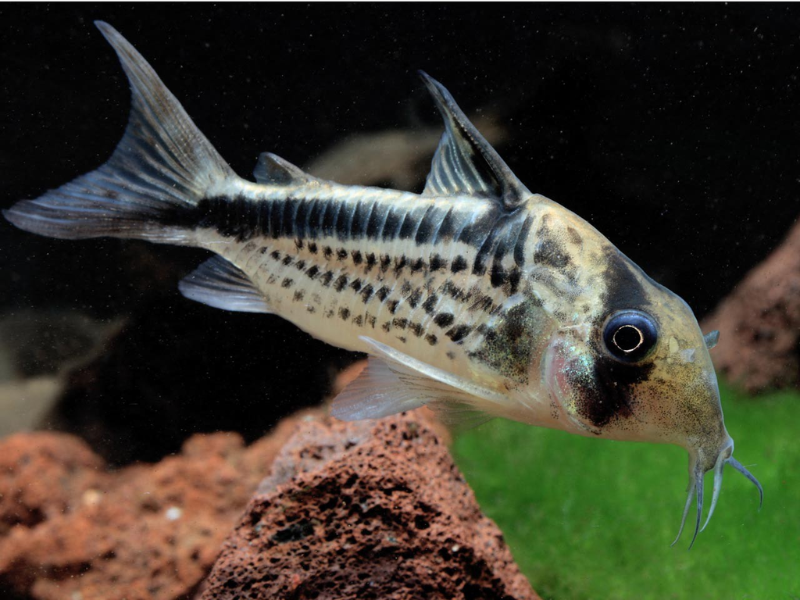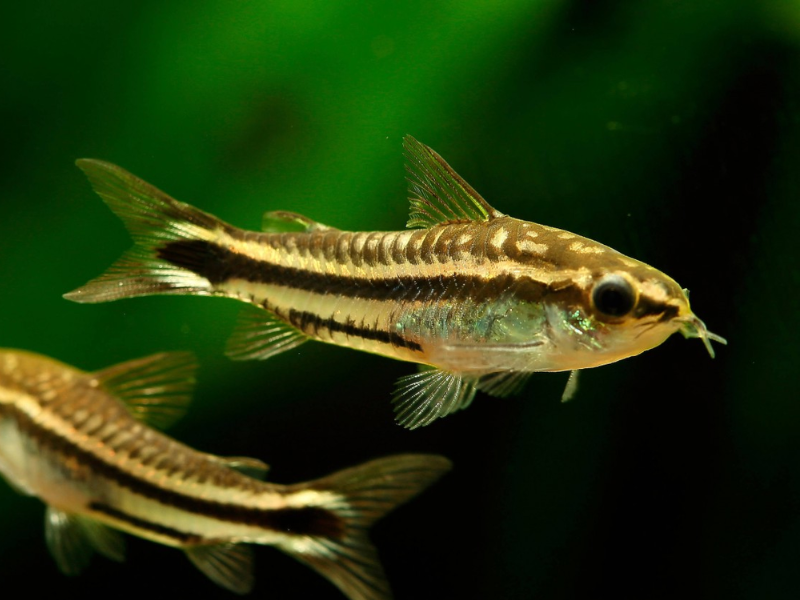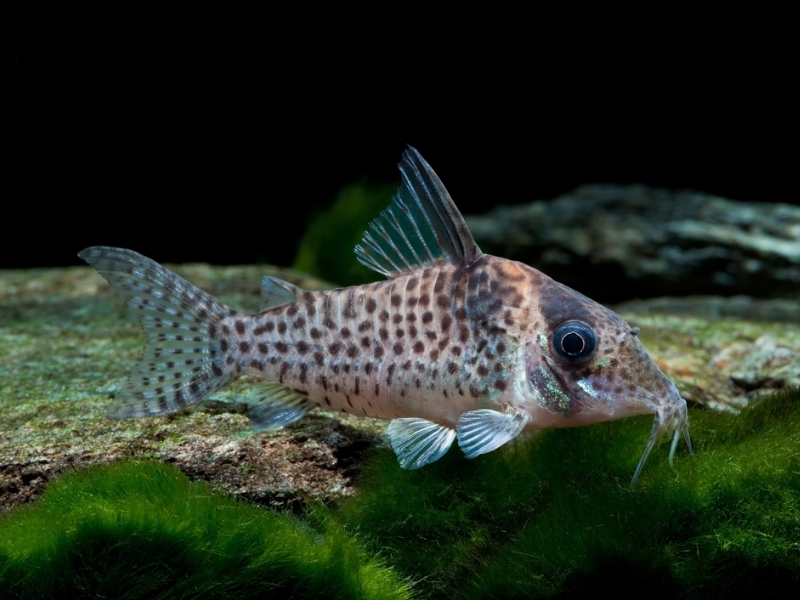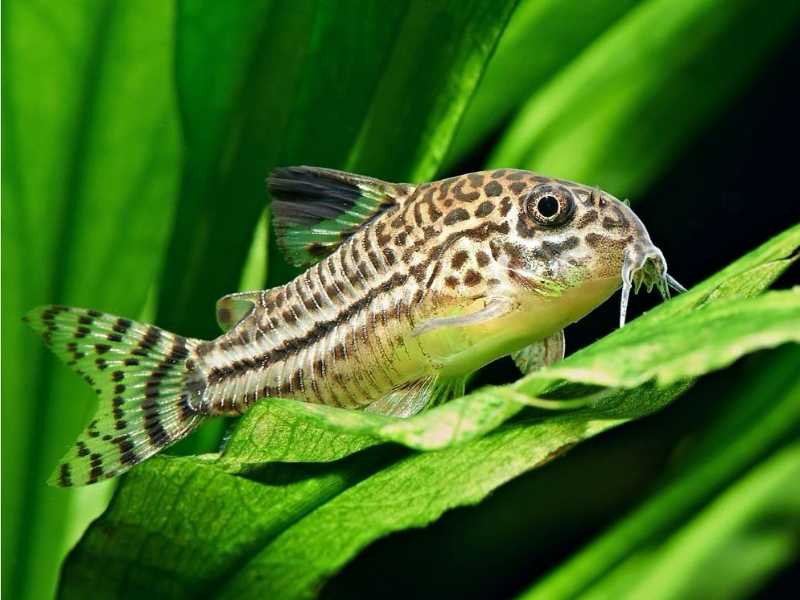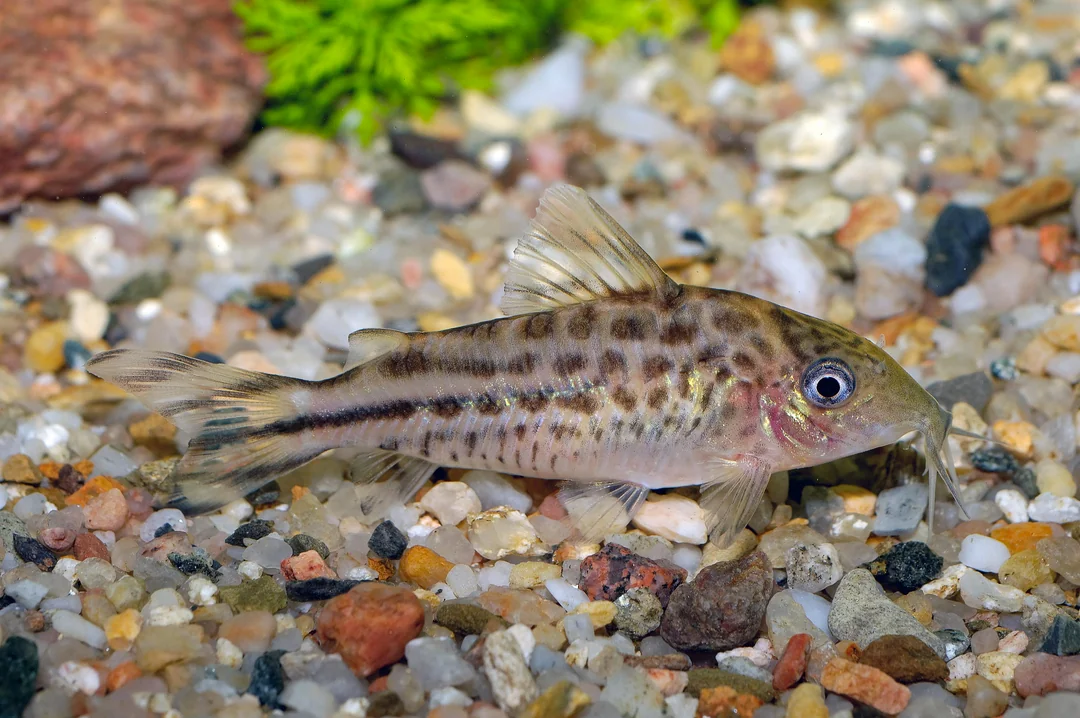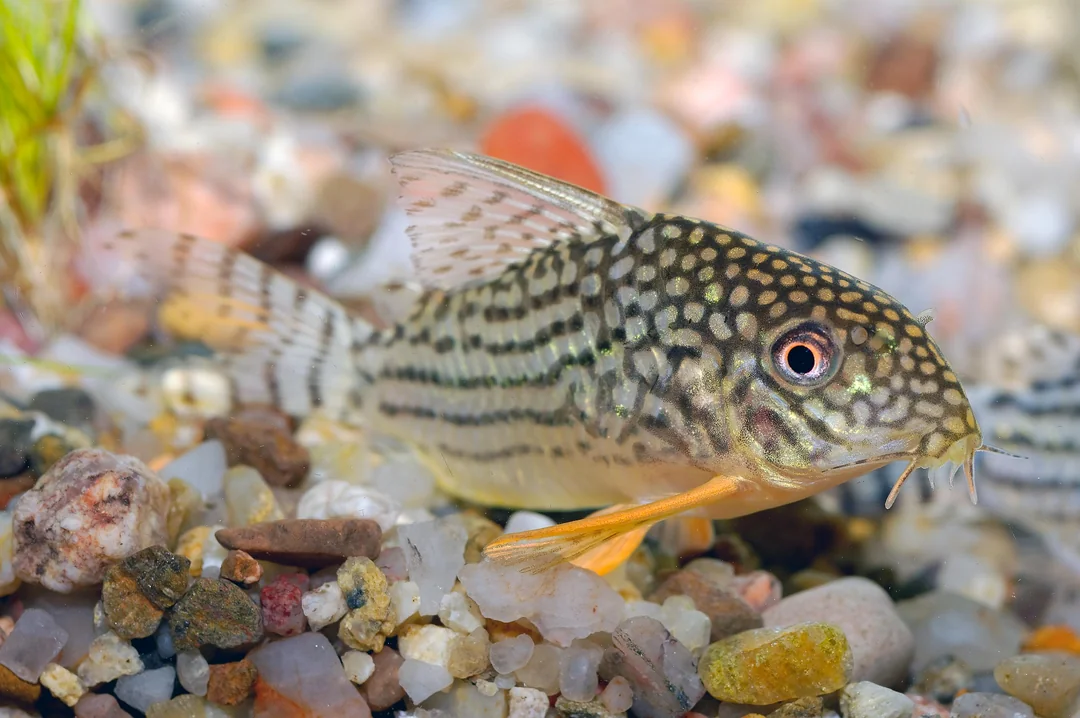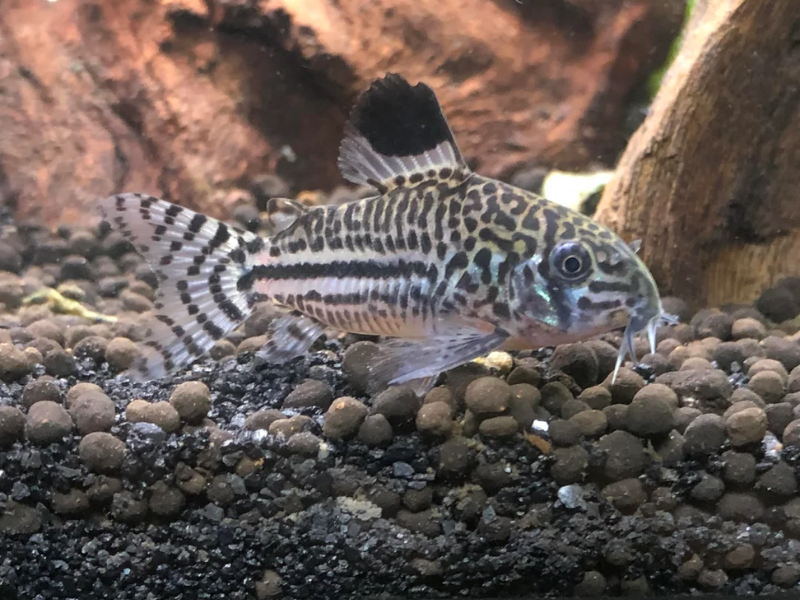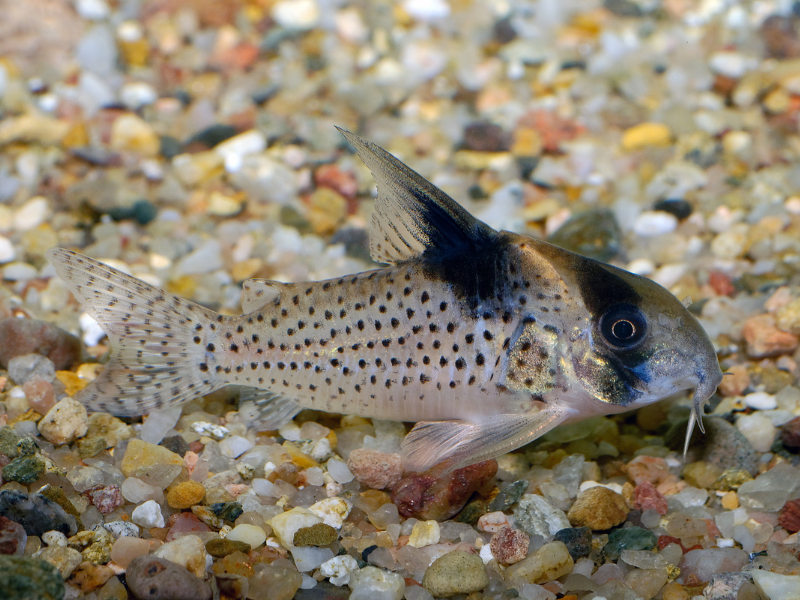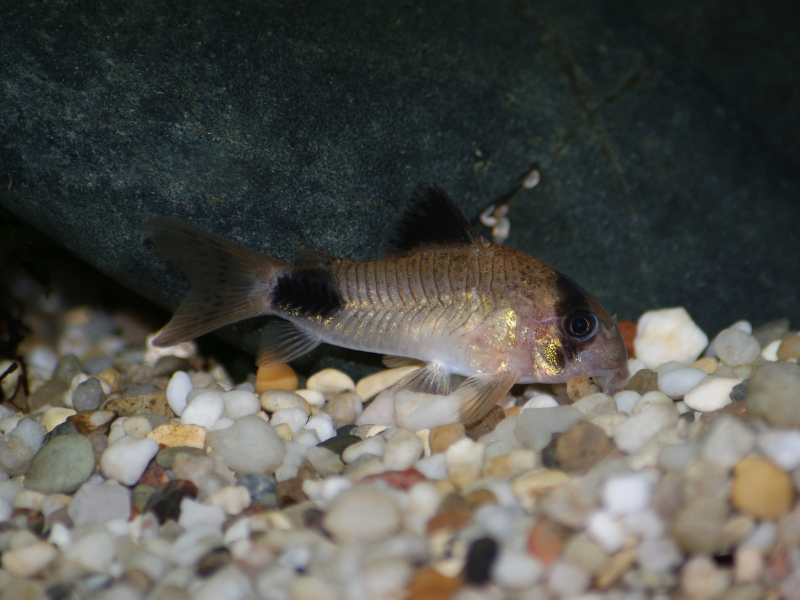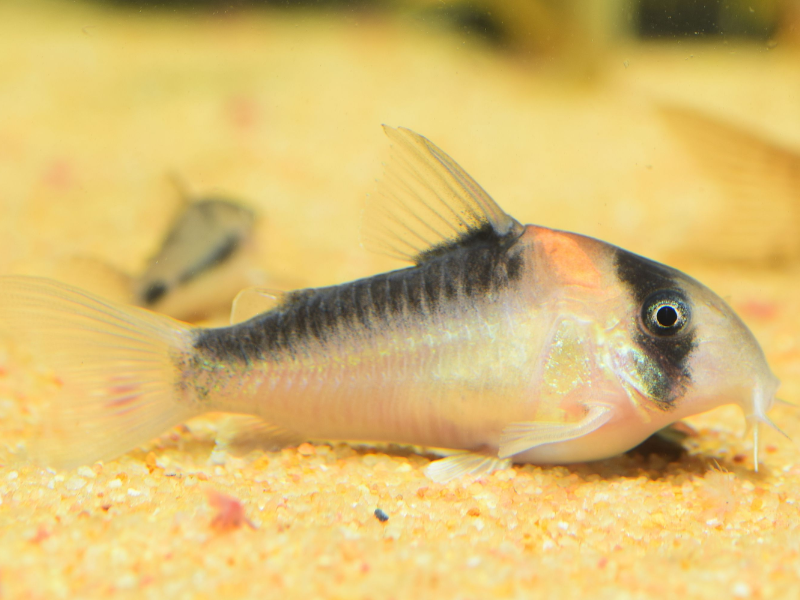Hoplisoma paleatus
Peppered Corydoras
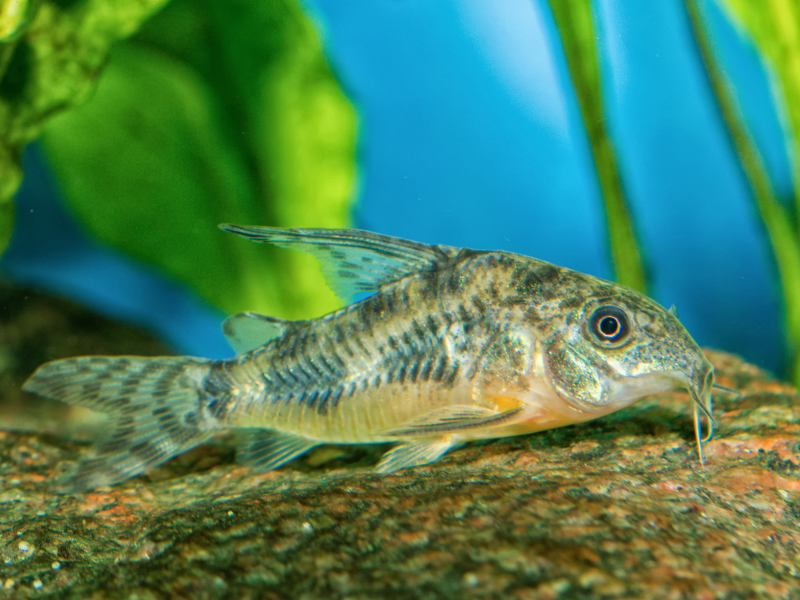
Scientific Classification
Quick Stats
Aquarium Building Information
About This Species
Basic Description
A hardy and peaceful bottom-dwelling fish, the Peppered Corydoras is an excellent choice for a community aquarium, known for its active and social nature. These fish are ideal for beginners because they are highly adaptable, tolerating a wide range of water acidity and hardness within a freshwater environment. They spend their days actively exploring the bottom of the tank, sifting through the substrate for food. As social animals, they feel most secure and exhibit their most interesting behaviors when kept in groups. It is crucial to provide them with tank mates that are similarly peaceful.
Their diet is straightforward; as omnivores, they will readily accept a variety of sinking foods. Quality sinking pellets or wafers should form the basis of their diet, supplemented with occasional frozen or live foods to ensure they receive complete nutrition. One of their fascinating behaviors is occasionally darting to the surface for a gulp of air, a natural adaptation that helps them in low-oxygen environments. While peaceful, their constant foraging can disturb very fine substrates, so robust aquarium plants are recommended over delicate, shallow-rooted varieties. With proper care and a suitable environment, these charming catfish can live for several years.
Detailed Description
Originating from the slow-moving rivers and tributaries of South America, the Peppered Corydoras has evolved into a resilient and adaptable bottom-dweller, making it a popular fixture in the aquarium hobby. Its natural habitat is characterized by soft substrates and abundant leaf litter, which provides both food and cover. In an aquarium, replicating these conditions encourages natural behaviors. A soft sand or fine, smooth gravel substrate is essential to protect their sensitive barbels, which they use to locate food. A gentle water flow is preferred, mimicking the calm waters of their native environment.
These fish exhibit a highly social structure and must be kept in groups to thrive. A solitary individual will be shy, stressed, and prone to illness. When kept in a proper school, they display confident and coordinated behaviors, often resting together and foraging as a group. Their moderate activity level consists of periods of rest punctuated by energetic exploration of the tank's lower region. As omnivores, their diet should be varied and consist primarily of foods that reach the bottom. High-quality sinking pellets, wafers, and gel foods are excellent staples. This should be supplemented with frozen or live foods like bloodworms and daphnia to provide enrichment and essential nutrients. They also play a beneficial role by consuming biofilm and leftover food that other fish may miss.
A notable physiological trait is their ability to perform intestinal respiration. They can absorb atmospheric oxygen through their gut, which allows them to survive in water with low dissolved oxygen levels. This is why they are occasionally seen making a quick dash to the surface. It is a supplementary breathing method and not an indication of poor water quality, unless it becomes excessively frequent. Due to their low waste production and modest size, they add a relatively small bioload to the aquarium, but a sufficiently sized and well-filtered tank is still necessary to accommodate a healthy school and maintain stable water conditions. Their peaceful demeanor makes them compatible with most small to medium-sized, non-aggressive fish that occupy the middle and upper swimming zones.
Scientific Description
Taxonomically classified within the family Callichthyidae, the armored catfishes, this species is a well-studied representative of the order Siluriformes. While historically and popularly known under the genus Corydoras, recent phylogenetic studies have resulted in its reclassification into the genus Hoplisoma. Morphologically, it possesses a fusiform, or torpedo-shaped, body that is ventrally flattened, an adaptation for a benthic lifestyle. The body is protected by overlapping bony plates or scutes rather than scales, a defining characteristic of its family. Sensory barbels on the jaw are vital for chemoreception, allowing the fish to navigate and locate food within the substrate in low-light conditions.
In its native range in South American river basins, it serves an important ecological role as a benthic detritivore. It forages through sediment, consuming organic detritus, small crustaceans, worms, and insects, thereby contributing to nutrient cycling. Its environmental interactions include rooting through the substrate, which can aerate the upper layers, and consuming biofilm from surfaces. A key physiological adaptation is its capacity for facultative aerial respiration. It can swallow air at the surface, which is then absorbed by a highly vascularized posterior intestine, supplementing its branchial (gill) respiration. This allows the species to thrive in hypoxic waters that are common in its natural habitat. Its oxygen consumption and subsequent waste production are relatively low, giving it a modest bioload impact. According to the IUCN Red List of Threatened Species, its conservation status is listed as Least Concern (LC), indicating that it has a wide distribution and is not facing immediate threats in the wild. This resilience is also reflected in its adaptability to a broad spectrum of water parameters in captivity, including a wide pH and hardness range, as long as the water remains fresh and low in salinity.
Breeding Description
Breeding this species is considered moderately difficult but is a rewarding project for the dedicated hobbyist. Success often begins with establishing a healthy, well-conditioned group of adults in a dedicated breeding aquarium. A recommended ratio is two or three males for every female to increase the chances of a successful spawn and to properly stimulate the female. Distinguishing between the sexes is key: females are noticeably larger, wider, and have a more rounded underbelly, a difference that is especially apparent when viewed from above. Males are comparatively smaller and more slender in their body profile.
To trigger spawning behavior, aquarists can simulate the onset of the rainy season in their natural habitat. This is most effectively achieved by performing a significant water change with water that is a few degrees cooler than the tank's current temperature. Increasing aeration and providing a current can also help induce spawning. The courtship ritual involves a flurry of activity, culminating in the male and female forming a characteristic 'T-position.' The female will then release and hold a small clutch of adhesive eggs between her pelvic fins, which she then deposits onto a surface she has cleaned. These surfaces can include aquarium glass, broad-leaved plants, or spawning mops.
Once the eggs are laid, the adult fish should be removed from the breeding tank to prevent them from consuming the eggs. The eggs will typically hatch within three to five days, depending on the water temperature. It is crucial to maintain high water quality in the hatching tank, and some breeders add an antifungal agent to prevent the eggs from fungusing. Newly hatched fry are extremely small and will first consume their yolk sac. Once they are free-swimming, they must be fed microscopic foods such as infusoria, powdered fry food, or microworms. As they grow, their diet can be gradually transitioned to larger foods like baby brine shrimp and finely crushed flakes or pellets.
Generate Printable Card
Create a printable card for this creature to display in your store or aquarium. The card includes a QR code for quick access to more information.
